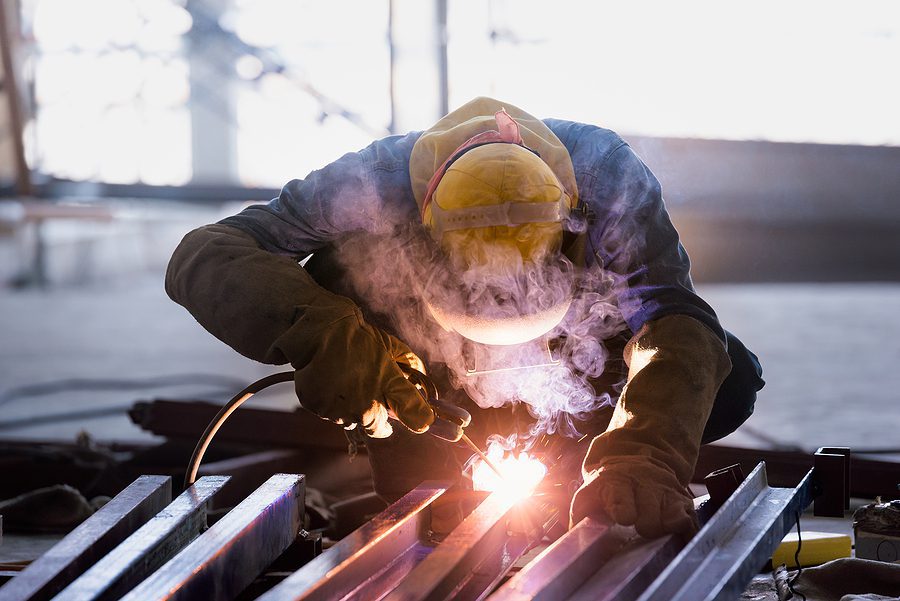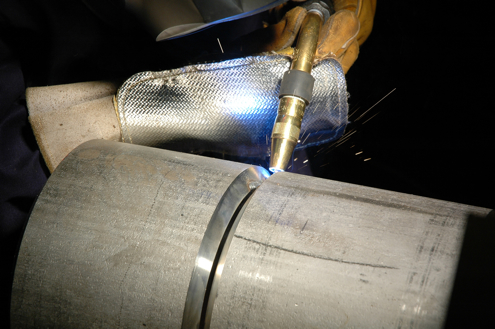Typical Welding Repair Issues and How to Address Them Efficiently
Welding repair services frequently encounter a series of issues that can threaten the stability of the last product. Common issues include inadequate infiltration, porosity, and misalignment, to name a few. Each issue provides distinct obstacles that call for details methods for resolution. Understanding these concerns is necessary for welders intending to enhance their skills and end results. This conversation will discover these typical welding repair service concerns and effective techniques to address them.
Inadequate Penetration
Insufficient infiltration takes place when the weld metal falls short to totally fuse with the base material, leading to weak joints and prospective structural failings. This issue commonly comes from insufficient warm input, wrong electrode angle, or incorrect welding rate. Welders may run into inadequate infiltration as a result of a mistake of the essential specifications for a details product density or kind. Additionally, contamination on the base material's surface can prevent reliable bonding, worsening the issue. To resolve insufficient infiltration, welders need to guarantee proper setups on their equipment and keep a clean work surface area. Regular evaluation of welds is suggested to determine any type of deficiencies early, permitting prompt adjustments and the avoidance of endangered structural honesty in bonded settings up.
Porosity
Porosity is a common defect in bonded joints that manifests as tiny gas bubbles caught within the weld metal. This flaw can compromise the honesty of the weld, bring about lowered strength and possible failing under stress and anxiety. Montana Mobile Welding and Repair Belgrade Welding. Porosity usually occurs from contamination, dampness, or incorrect welding techniques, which permit gases to leave into the liquified weld swimming pool. To deal with porosity, welders ought to ensure proper surface area prep work, preserve a tidy workplace, and utilize suitable welding specifications. Furthermore, choosing the appropriate filler product and shielding gas can reduce gas entrapment. Normal inspection and screening of welds can assist identify porosity early, guaranteeing timely rehabilitative actions are taken, therefore maintaining the high quality and integrity of the bonded framework
Misalignment
Misalignment in welding can arise from various aspects, including improper configuration and thermal expansion. Comprehending the source is important for effective resolution. Several improvement techniques are offered to realign components and ensure structural honesty.
Reasons for Misalignment
Welding misalignment frequently originates from a range of underlying issues that can compromise architectural stability. One primary reason is inappropriate fit-up of components prior to welding, which can lead to voids and unequal surfaces. Variants in thermal expansion throughout the welding procedure can likewise lead to distortion, especially if the products being signed up with have different coefficients of expansion. Additionally, inadequate fixturing and securing might fail to hold components safely in position, leading to motion during welding. Inadequately kept tools, consisting of welding equipments and devices, might present incongruities in the weld grain, further adding to imbalance. Operator mistake, stemming from inadequate training or experience, can likewise play a substantial function in developing misaligned welds.

Modification Techniques Available
Dealing with misalignment efficiently requires a combination of rehabilitative techniques customized to the particular issues handy. One common approach is using fixtures or jigs to hold elements in the proper position throughout welding, making sure regular positioning. In addition, pre-heating the products can help in reducing distortion and improve fit-up. For considerable misalignment, mechanical realignment strategies, such as making use of hydraulic jacks or clamps, can be used to correct the position prior to welding. Post-weld warm treatment may additionally be needed to alleviate tensions triggered by misalignment. Careful assessment and change throughout the arrangement phase can prevent imbalance concerns from ending up being considerable problems, advertising a smoother welding process and enhancing overall structural honesty.
Distortion
Distortion is an usual obstacle in welding that can develop from different aspects, consisting of unequal cooling and heating. Comprehending the sources of distortion is vital for implementing effective prevention methods. Addressing this issue not only improves structural stability but additionally enhances the overall high quality of the weld.
Reasons of Distortion
When subjected to the extreme heat of welding, materials commonly go through changes that can result in distortion. This phenomenon mainly arises from thermal expansion and tightening throughout the welding procedure. As the weld location warms up, the material broadens; upon cooling, it gets, which can develop internal stress and anxieties. Additionally, irregular home heating across a work surface can worsen these stress and anxieties, causing warping or flexing. The sort of material also plays a substantial duty; steels with varying thermal conductivity and coefficients of expansion might react in a different way, causing unpredictable distortions. Furthermore, inadequate joint design and poor fixturing can contribute to misalignment throughout welding, raising the probability of distortion. Comprehending these causes is vital for efficient welding repair and avoidance strategies.
Avoidance Techniques
Effective avoidance strategies for distortion throughout welding focus on regulating heat input and making sure proper joint design. Preserving a regular warm input helps to lessen thermal expansion and tightening, which can result in distortion. Making use of techniques such as preheating the workpiece can additionally minimize the temperature level gradient, promoting consistent heating. Furthermore, choosing ideal joint layouts, such as T-joints or lap joints, can improve security and decrease stress and anxiety concentrations. Executing correct fixturing to secure the work surfaces in position further aids in maintaining positioning throughout the welding procedure. Ultimately, staggered welding series can distribute warm a lot more evenly, stopping local distortion. By using these approaches, welders can significantly lower the probability of distortion and boost the total top quality of their welds.
Breaking
Cracking is a common problem come dc welding across in welding fixings, typically resulting from different factors such as incorrect air conditioning prices, material option, or poor joint preparation. The event of cracks can substantially jeopardize the stability of the weld, bring about potential failings during operation. To resolve this issue, welders need to initially analyze the origin, making sure that materials are suitable and suitably selected for the details application. In addition, controlling the air conditioning rate throughout the welding process is vital; rapid cooling can cause anxiety and cause splitting. Appropriate joint design and prep work likewise add to minimizing the threat. Executing these approaches can enhance weld top quality and sturdiness, eventually decreasing the chance of breaking in completed weldments.

Insufficient Fusion
A considerable concern in welding repair services is insufficient blend, which happens when the weld metal does not appropriately bond with the base product or previous weld passes - Montana Mobile Welding and Repair Belgrade Welding. This issue can result in weak points in the joint, potentially jeopardizing the honesty of the welded framework. Aspects adding to incomplete blend consist of not enough warmth input, improper welding strategy, and contamination of the surfaces being signed up with. To resolve this concern successfully, welders need to guarantee proper pre-weld cleansing and surface area prep work, as well as change their welding specifications to attain adequate infiltration and combination. Routine examination throughout the welding procedure can likewise aid determine incomplete fusion early, enabling prompt corrective steps to improve the overall top quality of the weld
Overheating
While welding repair work can enhance architectural honesty, overheating offers a considerable difficulty that can cause product destruction. Extreme heat throughout welding can change the mechanical residential properties of steels, causing reduced stamina, raised brittleness, and warping. This sensation is especially important in high-stress applications where structural reliability is extremely important. Determining getting too hot can include visual assessments for staining or distortion, along with checking temperature level throughout the welding procedure. To mitigate the threats linked with overheating, welders must use appropriate techniques, such as managing warm input, readjusting traveling rate, and utilizing ideal filler materials. In addition, carrying out pre- and post-weld heat treatments can aid bring back product residential properties and enhance the total quality of the repair, making certain long-lasting performance and security.
Often Asked Concerns
What Are the Common Signs of a Welding Problem?

Exactly How Can I Evaluate My Welds for Quality?
To evaluate welds for quality, one can utilize visual evaluations, ultrasonic screening, and radiographic approaches. Each method guarantees architectural honesty, identifies defects, and validates adherence to specified standards, ultimately boosting the integrity of the welded joints.
What Security Safety Measures Should I Take While Welding?
When welding, one must focus on safety and security by using ideal individual protective tools, making certain appropriate ventilation, protecting flammable products away, preserving a tidy office, and recognizing environments to protect against crashes and injuries.
Can I Fix a Weld Without Redesigning the Entire Joint?
Fixing a weld without renovating the whole joint is feasible, relying on the damages (Belgrade). Strategies such as grinding, including filler product, or making use of a welding procedure can effectively deal with specific defects while protecting the bordering framework
What Tools Are Vital for Efficient Welding Fixes?
Crucial devices for efficient welding repair services include a welding device, cord brush, grinder, protective equipment, clamps, and filler materials. Each tool plays an essential function in making certain top quality and safety and security throughout the fixing process. Porosity commonly emerges from contamination, dampness, or incorrect welding techniques, which enable gases to escape into the liquified weld pool. Improperly kept devices, including welding makers and devices, may present inconsistencies in the weld bead, additional contributing to imbalance. When subjected to the extreme warm of welding, materials commonly undergo adjustments that can lead to distortion. Cracking is an usual problem run into in welding fixings, usually resulting from numerous aspects such as incorrect air conditioning prices, product option, or inadequate joint preparation. A substantial concern in welding repairs is insufficient combination, which occurs when the weld metal does not adequately bond with the base material or previous weld passes.